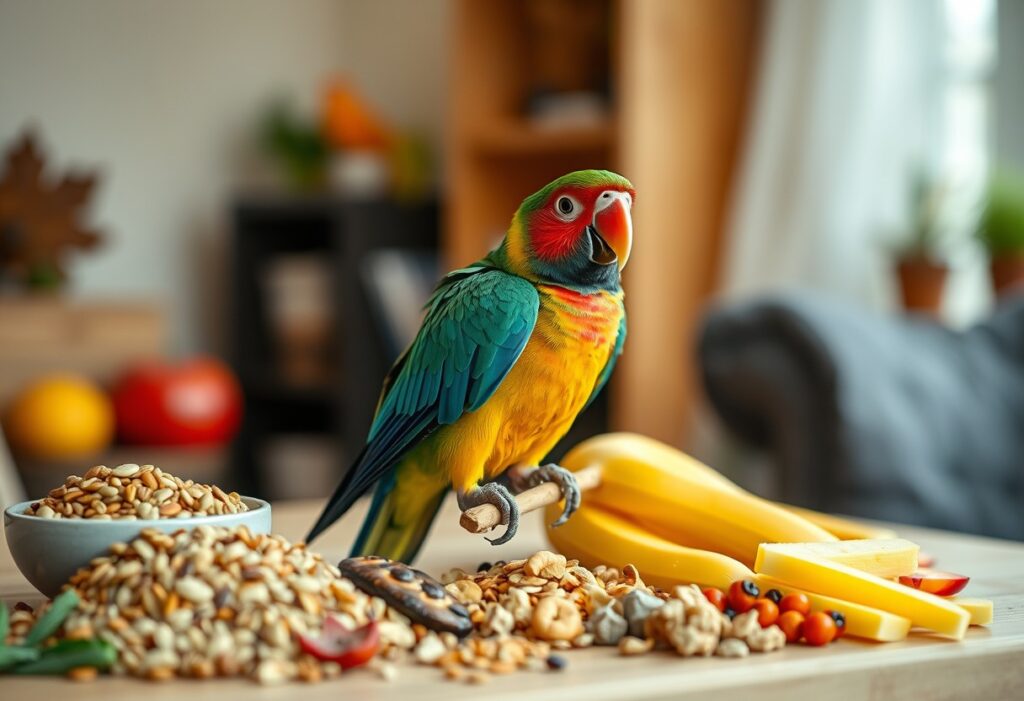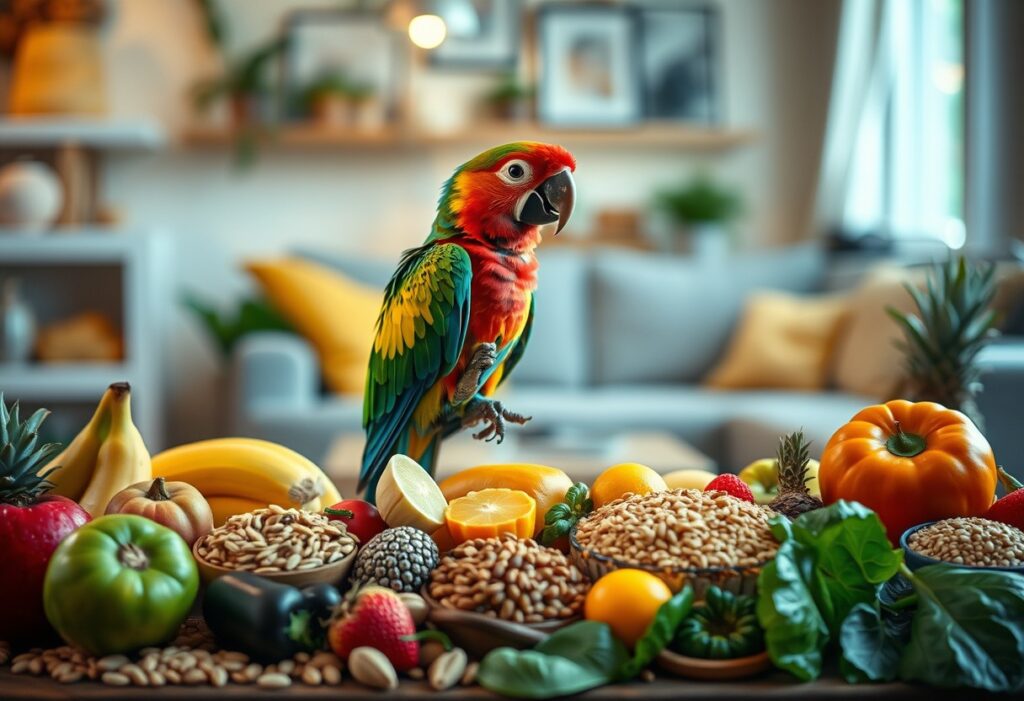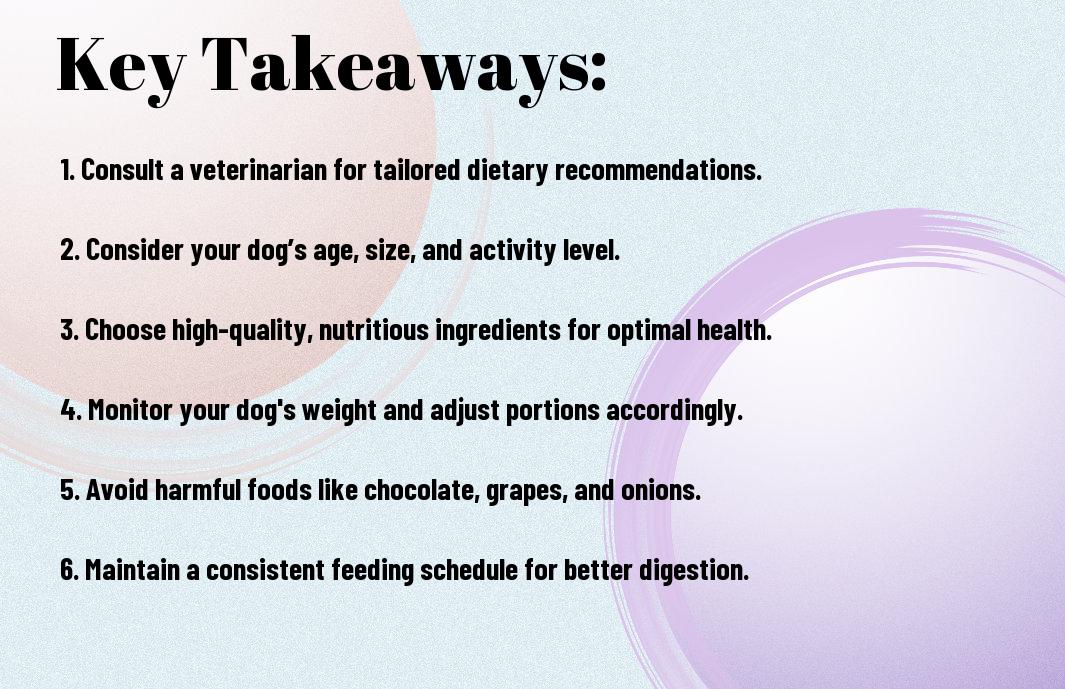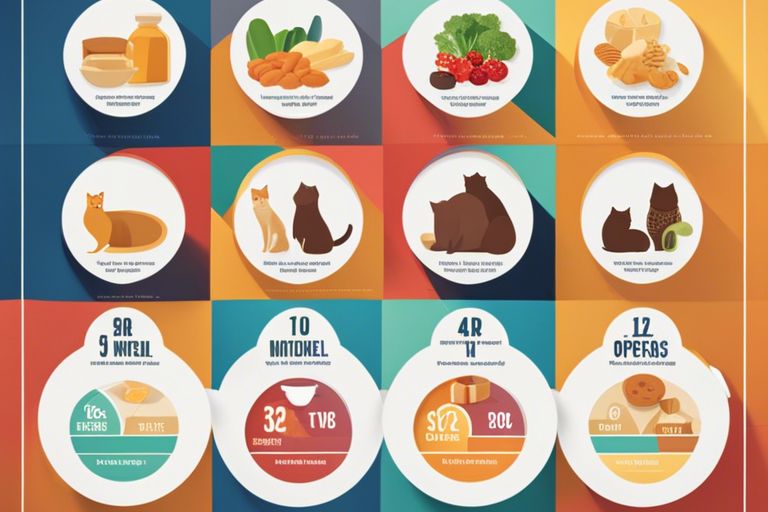Many bird owners face the challenge of changing their feathered friends’ diets, and it’s crucial to do so carefully to avoid any health issues. Transitioning your bird to a new diet should be a gradual process that allows their digestive system to adjust properly, ensuring they receive nutritional balance without stress. In this guide, you’ll learn effective strategies to introduce new foods while minimizing risks and promoting long-term health for your pet. Let’s explore how to make this transition safely and successfully.
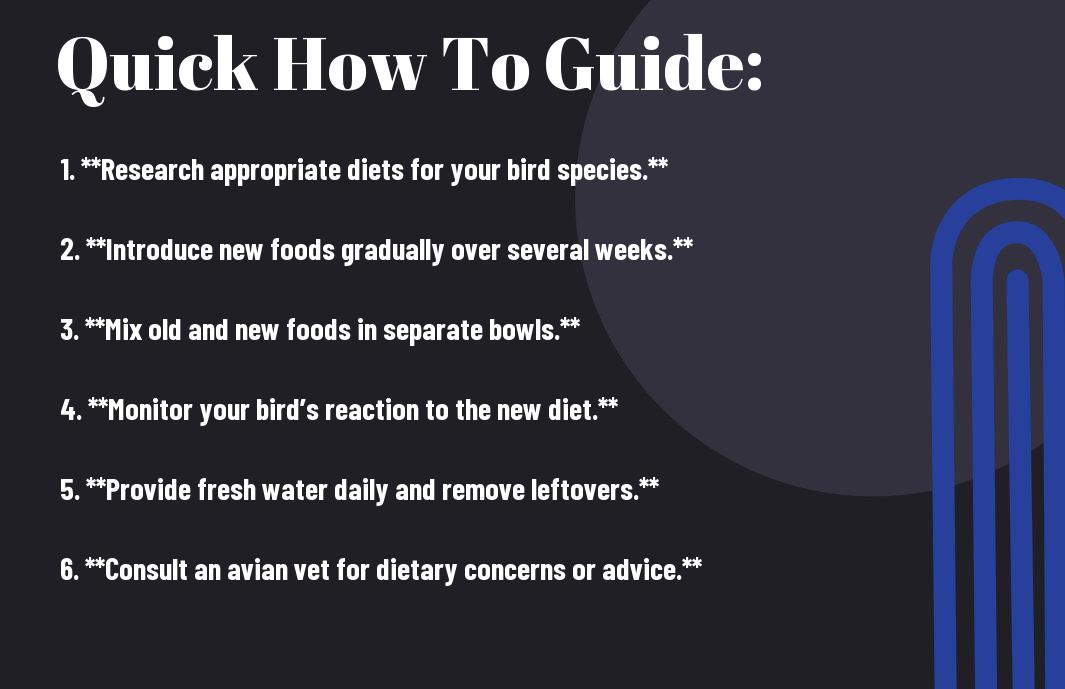
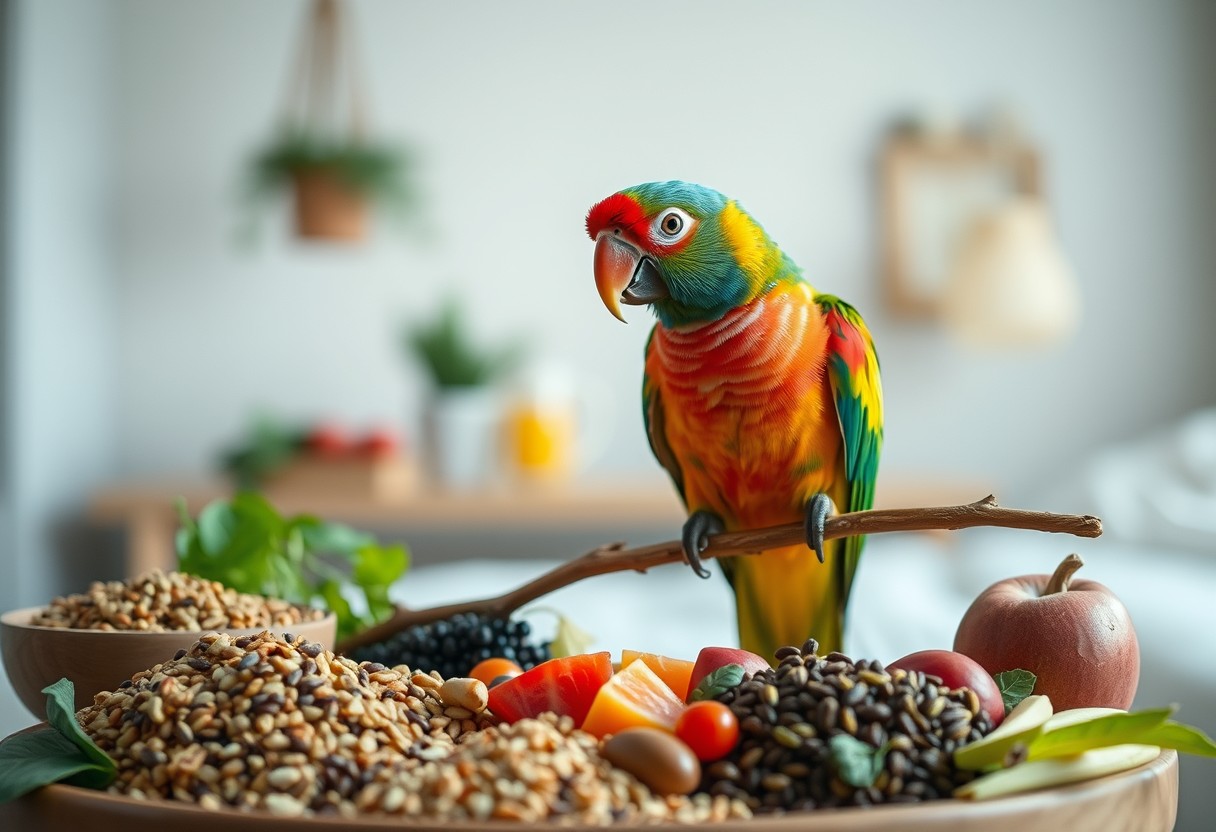
Understanding Your Bird’s Dietary Needs
To ensure a smooth transition to a new diet for your bird, it’s vital to have a foundational understanding of their specific dietary needs. Birds have unique nutritional requirements that are pivotal to their health, including the right balance of proteins, fats, carbohydrates, vitamins, and minerals. Each species may have different preferences and nutritional needs, so recognizing the specific requirements of your bird is crucial in providing a well-rounded diet that supports their overall well-being.
Identifying Nutritional Requirements
One of the first steps in transitioning your bird to a new diet is identifying their nutritional requirements. You can start by consulting with an avian veterinarian who can assess your bird’s current health status and recommend tailored dietary guidelines. Additionally, consider factors such as your bird’s age, breed, activity level, and any specific health conditions that may require special dietary adjustments. Understanding these aspects will help you make informed choices about what dietary changes are necessary for your feathered friend.
One common approach is to examine the diets of wild birds similar to yours. This can give you insight into the types of food they naturally consume and can serve as a reference point for creating a balanced diet. You may also want to utilize reliable resources, such as avian nutrition guides and research articles, to gather comprehensive knowledge about your bird’s specific needs.
Common Dietary Components for Birds
Even though your bird’s dietary needs may differ from others, there are some common ingredients you should consider including in their diet. Fresh fruits and vegetables are crucial for providing vital vitamins and minerals, while high-quality pellets can serve as a staple food source, offering a balanced mix of nutrients. Additionally, seeds can be a delicious treat but should be given in moderation, as they are often high in fat and can lead to obesity if over-consumed.
Components like fresh fruits and vegetables are vital as they provide important nutrients that help bolster your bird’s immune system and promote overall health. Pellets are designed to be a well-rounded source of nutrition, ensuring that your bird receives the vital vitamins and minerals they need daily. Be cautious with seeds; while they are often favored by birds, they should not be the mainstay of their diet due to their high fat content. It’s also vital to avoid toxic foods such as chocolate, avocado, and caffeine, which can have serious health consequences. Overall, a well-balanced mix of these components will help support your bird’s health as you transition them to a new dietary regimen.
Factors to Consider Before Transitioning
Now, before you initiate on the journey of transitioning your bird to a new diet, it is crucial to evaluate a few important factors. Not only will this ensure a smooth transition, but it will also help maintain your bird’s overall health and well-being. Here are some key considerations:
- Age and Health of Your Bird
- Type of Current Diet
- Species-Specific Dietary Needs
Age and Health of Your Bird
There’s no one-size-fits-all approach when it comes to transitioning your bird’s diet, especially considering their age and health status. Young birds, for instance, may adapt more easily to changes compared to older birds or those with health conditions. If your bird is elderly or has any medical issues, you may need to take extra precautions, consulting your avian veterinarian for specific recommendations.
Additionally, a thorough health check is crucial before making any dietary changes. Your bird’s current weight and nutritional needs should be assessed to ensure that the new diet will support their health appropriately. This attention to detail will help you avoid unnecessary complications and ensure that your bird thrives on their new diet.
Type of Current Diet
Factors influencing the transition also include the current diet your bird is consuming. If your bird is used to a diet consisting solely of seeds, moving them to a more balanced diet of pellets, fresh fruits, or vegetables can be a more significant adjustment. Birds that are accustomed to a high-fat, low-nutrient diet may face health challenges during the transition, so you must have a clear understanding of their existing nutritional intake.
Consider not only the ingredients of their current diet but also their eating habits. Some birds may be picky and unwilling to try new foods, making the transition process more challenging. Understanding your bird’s current preferences can help you strategize a gradual transition to introduce new foods that appeal to their taste.
Species-Specific Dietary Needs
Factors like your bird’s species play a critical role in their dietary requirements. Each species has unique nutritional needs, which can make certain foods beneficial or harmful. For example, some species thrive on a mix of fruits, vegetables, and grains, while others may require higher protein content or specific vitamins to remain healthy. It’s crucial to familiarize yourself with your bird’s species-specific needs to develop a suitable diet plan.
Before proceeding with any dietary changes, research the ideal dietary composition for your bird’s species. This research will empower you to make informed decisions and create a healthy and balanced menu tailored specifically to your feathered friend. Thou should not underestimate the significance of these factors when implementing a new diet.
How to Implement the Transition
Once again, transitioning your bird to a new diet can be a delicate process requiring your careful attention. Implementing this change effectively will help ensure that your feathered friend remains healthy and adjusts well to the new foods you want to introduce. It’s vital to approach this task with a well-structured plan, focusing on gradual introductions, monitoring reactions, and remaining patient throughout the process.
Gradual Introduction of New Foods
Now, the key to successfully shifting your bird’s diet lies in the gradual introduction of new foods. Start by incorporating a small portion of the new diet into their current food. For instance, if you are introducing pellets, mix a small amount with the seeds or other diet they are used to. Over days or even weeks, you can slowly increase the proportion of the new food while decreasing the old one. This method helps your bird to acclimatize to different textures and tastes without feeling overwhelmed.
Additionally, it’s crucial to note that every bird has different preferences. While some may take to new foods quickly, others might be more hesitant. Be prepared for some reluctance and persistently offer the new items, as repetition is often necessary for acceptance. Keeping your bird’s environment calm and encouraging exploration through play can also promote a positive association with the new diet.
Monitoring Reactions and Adjustments
Now, as you implement the diet change, monitoring your bird’s reactions should be a top priority. Watch for any changes in their behavior, droppings, or overall health. If you notice any signs of distress, such as vomitting, diarrhea, or loss of appetite, it may indicate that your bird is having difficulty adjusting to the new foods. At this point, it might be necessary to slow down the transition pace or revert partially to the previous diet to see if symptoms improve.
The adjustment period is unique for each bird, and some may adapt quicker than others. By documenting your bird’s daily reactions, you will have a clearer understanding of what works and what doesn’t. If your bird is eating less or showing signs of lethargy, you could consider introducing the new food in smaller quantities or perhaps combining it with favorite foods to ensure they remain interested and engaged.
Maintaining Consistency and Patience
Transitioning your bird to a new diet is not an overnight task; it requires consistency and patience. As you continue to introduce the new foods, make sure to maintain a consistent feeding schedule to establish a routine. Birds thrive on routine as it provides them with a sense of security in their environment. You should refrain from rushing the transition process, as each day, your bird will become more accustomed to the new diet.
Monitoring your bird’s willingness to try new foods is a crucial aspect of the process. If your bird enjoys a specific new item, continue to present it regularly while introducing additional options gradually. Over time, with your commitment and understanding of their needs, your bird will develop a more varied and balanced diet.
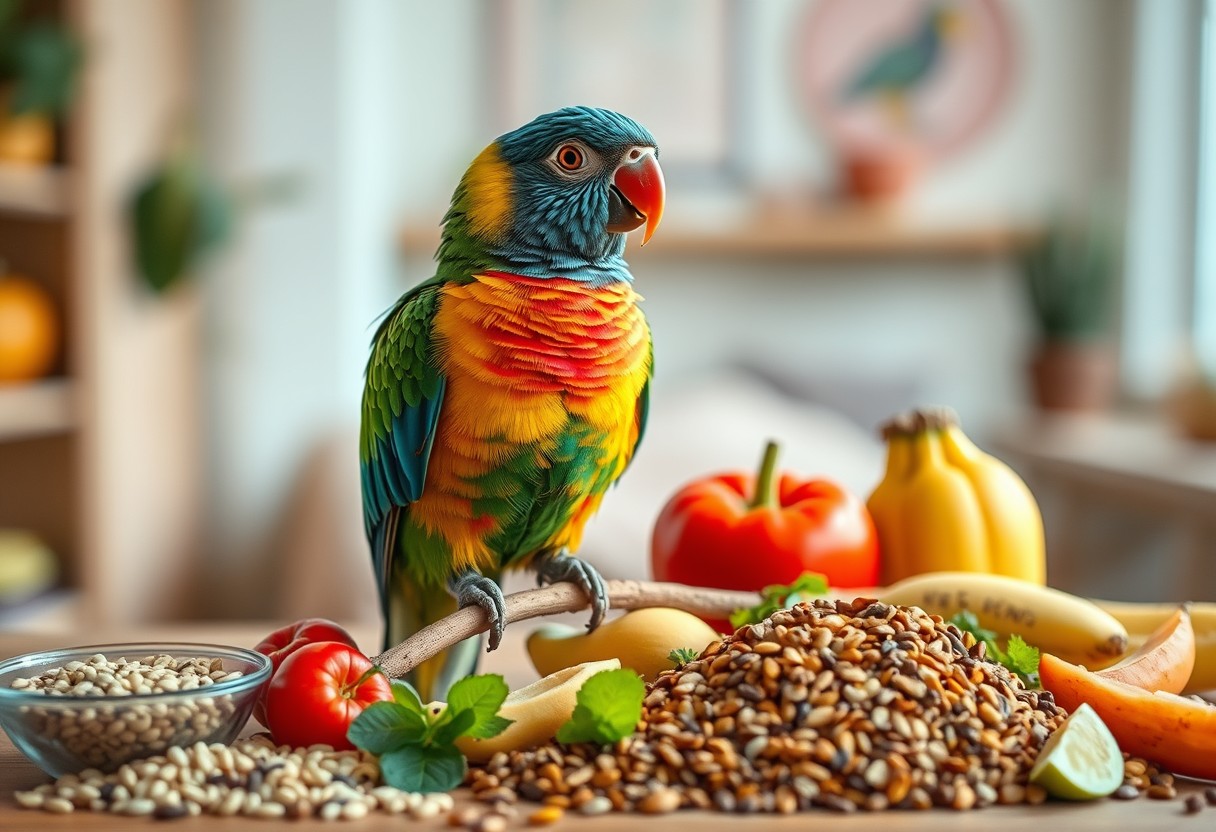
Tips for Success
Unlike many people think, transitioning your bird to a new diet doesn’t have to be a daunting task. With the right approach, you can ensure that the process is smooth and successful. Here are some crucial tips to help you along the way:
- Make gradual changes to avoid overwhelming your bird.
- Offer small portions of new food alongside their current diet.
- Monitor your bird’s health and behavior closely during the transition.
- Stay consistent with feeding times and locations.
- Provide fresh water at all times to keep your bird hydrated.
Knowing these strategies will give you the confidence to navigate the transition successfully.
Creating a Positive Eating Environment
The environment in which your bird eats can significantly influence their willingness to try new foods. Make sure their feeding area is calm and free from distractions. You might also consider utilizing their favorite dishes or foraging toys to make the experience more engaging. Birds are naturally curious, and creating a space that encourages exploration can stimulate their interest in different foods.
Additionally, you should aim to establish a routine around feeding times. Consistency helps your bird feel secure, making them more likely to try new dietary options. By turning mealtime into a positive and enjoyable experience, you’ll promote a healthy relationship with food, which can make dietary transitions much easier.
Incorporating Variety to Encourage Acceptance
Assuming your bird is familiar with their current diet, introducing a variety of textures, colors, and flavors is a great way to pique their interest in new foods. Experiment with offering fruits, vegetables, seeds, and pellets, each presented differently. Cutting them into small pieces or offering them whole can change a bird’s perception of the food and encourage them to peck and explore.
Creating a visually appealing and diverse plate can encourage curiosity and acceptance among your birds. By presenting several options at once, you’re more likely to discover what they enjoy the most. Be mindful of, the goal here is to make trying new foods an appealing adventure rather than a scary ordeal.
Seeking Professional Advice if Necessary
Success in transitioning your bird to a new diet sometimes requires the guidance of a qualified avian veterinarian or a bird nutrition expert. If you notice any signs of distress, decreased appetite, or changes in health during the transition, it’s crucial to consult with a professional. They can offer tailored advice specific to your bird’s species, age, and health condition, ensuring they receive the best possible care.
Plus, seeking professional advice can help prevent serious nutritional deficiencies or health issues related to sudden dietary changes. Always prioritize your bird’s well-being throughout their dietary transition—their health should be your top concern.
Final Words
Following this guide will help ensure that you transition your bird to a new diet safely and effectively. Start by introducing the new foods gradually, mixing them with your bird’s current diet to allow for a smooth adjustment. Monitor your bird’s behavior and eating habits closely during this transition period; any signs of distress or refusal to eat should prompt you to reassess your approach. Remember that every bird is unique, and what works for one may not work for another, so be patient and flexible as you navigate this important dietary change.
Incorporating a variety of fresh fruits, vegetables, and high-quality pellets can significantly enhance your bird’s overall health and well-being. By staying informed and attentive to your pet’s needs, you can foster a successful transition that leads to a more nutritious and balanced diet. Don’t hesitate to consult your avian veterinarian for personalized advice tailored to your bird’s specific requirements, especially if you have concerns or questions throughout the process. Your dedication to your bird’s nutrition will contribute significantly to their longevity and happiness.
FAQ
Q: How can I tell if my bird needs a diet change?
A: There are several signs that may indicate your bird needs a diet change. If you notice any of the following, it might be time to reassess their diet: weight fluctuations, feather plucking, lack of energy, changes in droppings, or if they are becoming disinterested in their food. It’s also important to consider age, species-specific dietary needs, and any changes in health. Always consult your avian veterinarian before making significant changes to ensure it’s a healthy choice for your bird.
Q: What is the best method for transitioning my bird to a new diet?
A: The safest way to transition your bird to a new diet is to do it gradually over a two to four week period. Start by mixing a small amount of the new food with their current food, gradually increasing the proportion of the new diet while decreasing the old. Monitor your bird’s response to the new food; if they seem hesitant, provide more of the old food alongside it. Always ensure that fresh water is available and that the new foods are appropriate for the bird’s species.
Q: What types of foods should I include in my bird’s new diet?
A: A well-balanced diet for birds typically includes a variety of seeds, pellets, fresh fruits, and vegetables. Pellets are often recommended as a main food source because they provide balanced nutrition. Additionally, consider incorporating leafy greens, carrots, sweet potatoes, berries, and safe nuts for extra nutrients. Always avoid foods that are toxic to birds, such as avocado, chocolate, and caffeine. Introduce new foods one at a time and observe your bird’s preferences and reactions.
